Comic Strip Spread
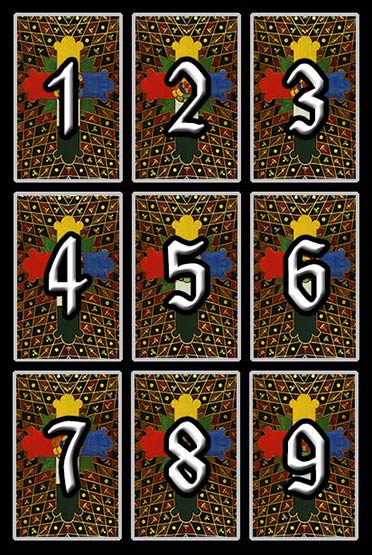
Difficulty: Easy
Note: This spread works best with decks like the Diary of a Broken Soul or Surrealist Tarot because they display scenes rather than pips and do not use reversals.
The Comic Strip Spread is a simple nine-card chronological spread that looks like a page of a comic book. This method should be used to get a glimpse of the future as it would pan out naturally. It may be insightful to use this spread in coordination with biorhythms. The spread is easy to read as a storyboard, just like a comic strip.
The main subject is apparent in the first card, while the story plays out through the following tarot cards.
It is important to pay particular attention to the cards and the relationships with their neighbours. Notice which directions the cards are facing, and how they interact.
Your Comic Strip Tarot Reading with the Book of Thoth
The Chariot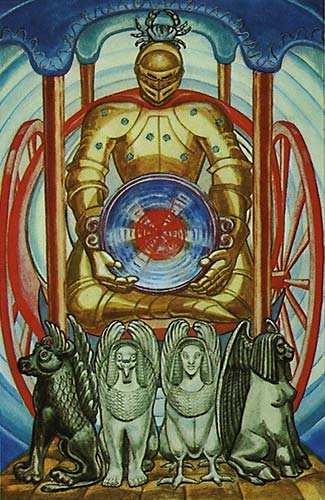 |
6 of Wands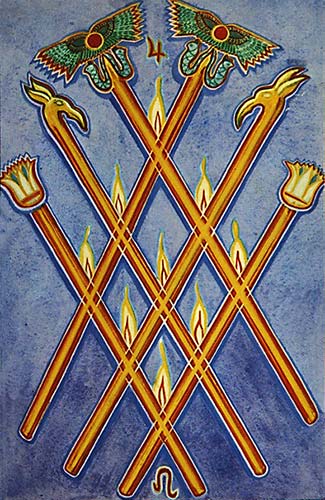 |
5 of Swords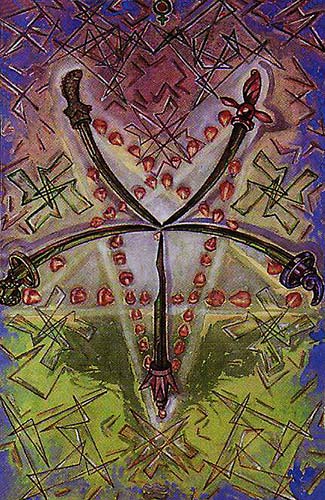 |
Adjustment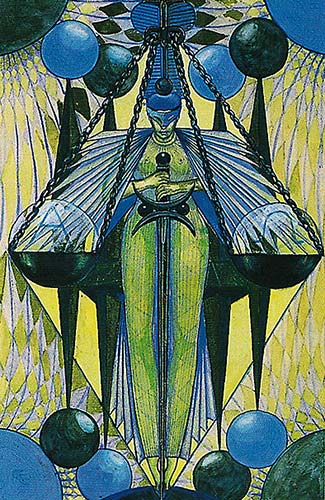 |
The Hermit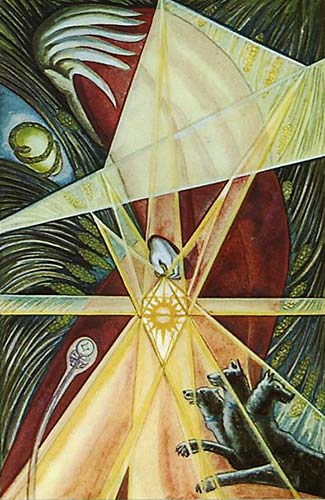 |
9 of Swords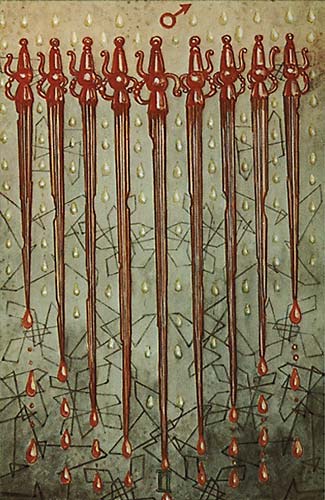 |
The Star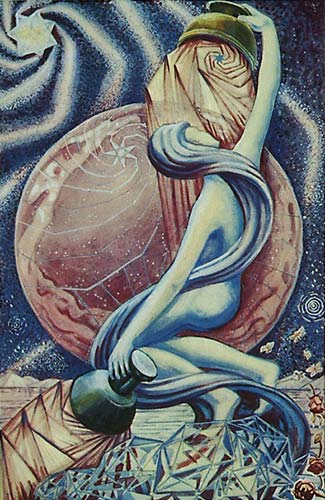 |
3 of Disks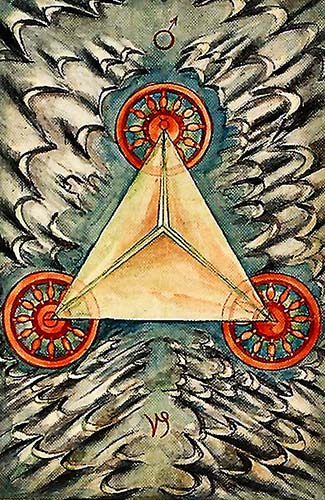 |
The Fool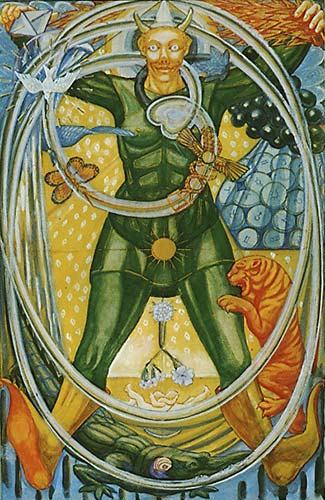 |

Card 1: The Chariot
Cancer
Triumph, victory, hope, memory, digestion, violence in maintaining traditional ideas, the 'die-hard', ruthlessness, lust of destruction, obedience, faithfulness, authority under authority.

Card 2: 6 of Wands
Jupiter in Leo – Victory
This card represents Tiphareth of the suit of Fire. This shows Energy in completely balanced manifestation. The Five has broken up the closed forces of the Four with revolutionary ardour, but a marriage has taken place between them; and the result is the Son, and the Sun.
The reference is also to Jupiter and Leo, which seems to imply a benediction on the harmony and beauty of this arrangement. It Will be seen that the Three Wands of the Three Adepts are now orderly arranged; and the flames themselves, instead of shooting out in all directions, burn steadily as in lamps. They are nine in number, in reference to Yesod and the Moon. This shows the stabilisation of the Energy, and its reception and reflection by the Feminine.
There is no circle to enclose the system. It is self-supporting, like the Sun.

Card 3: 5 of Swords
Venus in Aquarius – Defeat
The intellect has been enfeebled by sentiment. The defeat is due to pacifism. Treachery also may be implied.
The hilts of the swords form the inverted pentagram, always a symbol of somewhat sinister tendency. Here matters are even worse; none of the hilts resembles any of the others, and their blades are crooked or broken. They give the impression of drooping; only the lowest of the swords points upwards, and this is the least effective of the weapons. The rose of the previous card has been altogether disintegrated.

Card 4: Adjustment
Libra
Justice, or rather justesse, the act of adjustment, suspension of all action pending decision; in material matters, may refer to law suits or prosecutions. Socially, marriage or marriage agreements; politically, treaties.

Card 5: The Hermit
Virgo
Illumination from within, secret impulse from within; practical plans derived accordingly. Retirement from participation in current events.

Card 6: 9 of Swords
Mars in Gemini – Cruelty
Consciousness has fallen into a realm unenlightened by reason. This is the world of the unconscious primitive instincts, of the psychopath, of the fanatic. The celestial ruler is Mars in Gemini, crude rage of hunger operating without restraint; although its form is intellectual, it is the temper of the inquisitor.
The symbol shows nine swords of varying lengths, all striking downwards to a point. They are jagged and rusty. Poison and blood drip from their blades. There is, however, a way of dealing with this card: the way of passive resistance, resignation, the acceptance of martyrdom. Nor is an alien formula that of implacable revenge.

Card 7: The Star
Aquarius
Hope, unexpected help, clearness of vision, realisation of possibilities, spiritual insight, with bad aspects, error of judgment, dreaminess, disappointment.

Card 8: 3 of Disks
Mars in Capricorn – Works
The influence of Binah in the sphere of Earth shows the material establishment of the idea of the Universe, the determination of its basic form. It is ruled by Mars in Capricornus; he is exalted in that Sign, and therefore at his best. His energy is constructive, like that of the builder or engineer. The card represents a pyramid viewed from above the apex.
This pyramid is situated in the great Sea of Binah in the Night of Time, but the sea is solidified; hence the colours of the background are mottled, a cold thin dark grey with a pattern of indigo and green. The sides of the pyramid have a strong reddish tint, showing the influence of Mars.

Card 9: The Fool
Air
In spiritual matters, the Fool means idea, thought, spirituality, that which endeavours to transcend earth.
In material matters, it may, if badly dignified, mean folly, eccentricity, or even mania.
But the essential of this card is that it represents an original, subtle, sudden impulse or impact, coming from a completely strange quarter.
All such impulses are right, if rightly received; and the good or ill interpretation of the card depends entirely on the right attitude of the Querent.
